| Allen, Wayne A.
11 I St.
Turners Falls, MA 01376
Chapter: 7
Filing Date: 12/10/09 Ayala, Dinorah
a/k/a Marquez, Dinorah Ayala
43 Westford Ave.
Springfield, MA 01109
Chapter: 13
Filing Date: 12/10/09 Ball, Karen R.
735 Salisbury Road
Sheffield, MA 01257
Chapter: 7
Filing Date: 12/11/09 Bennett, Randy J.
Bennett, Sheila D.
61 Coffey Hill Road
Ware, MA 01082
Chapter: 7
Filing Date: 11/30/09 Biddle, Albert L.
2 School St., Apt. 3A
Hatfield, MA 01038
Chapter: 7
Filing Date: 12/06/09 Britt, Betty L.
33 Plumtree Road
Springfield, MA 01118
Chapter: 7
Filing Date: 12/09/09 Burridge-Vohar, Donna L.
90 Pomeroy Ter.
Northampton, MA 01060
Chapter: 7
Filing Date: 11/30/09 Burzynski, Teresa
Burzynski, Jean F.
32 Alderbrook Lane
West Springfield, MA 01089
Chapter: 7
Filing Date: 12/11/09 Carey, Michelle E.
Carey, Russell J.
84 Grove St.
Athol, MA 01331
Chapter: 7
Filing Date: 12/11/09 Carlson, Martin Scott
3 Edward Ave.
Turners Falls, MA 01376
Chapter: 7
Filing Date: 12/01/09 Channell, Scott M.
49 Bridge St.
Hatfield, MA 01038
Chapter: 7
Filing Date: 12/09/09 Charland, Alice Jeanne
26 Emerald Place
Easthampton, MA 01027
Chapter: 7
Filing Date: 12/10/09 Chase, Susanne M.
a/k/a Holt, Susanne M.
129 Litttle River Road
Westfield, MA 01085
Chapter: 7
Filing Date: 12/01/09 Chester, Vernon A.
183 School St. North
Barre, MA 01005
Chapter: 13
Filing Date: 11/30/09 Clark, John W.
Clark, Amy M.
a/k/a Finocchio, Amy M.
6 Bellevue Ave. Ext.
Ware, MA 01082
Chapter: 7
Filing Date: 12/15/09 Clendenin, Mark A.
Clendenin, Brenda L.
9 Shore Road
Southwick, MA 01077
Chapter: 13
Filing Date: 12/11/09 Colon, Jennifer B.
3 Exeter St.
Easthampton, MA 01027
Chapter: 7
Filing Date: 12/13/09 Conant, Denise M.
74 Walker Pond Road
Sturbridge, MA 01566
Chapter: 7
Filing Date: 11/30/09 Cooley, Annette Madel
a/k/a Warren, Annette Madelene
93 Grochmal Ave. #28
Indian Orchard, MA 01151
Chapter: 7
Filing Date: 12/07/09 Coulombe, Robert Ronald
Coulombe, Claire Lucille
250 East St.
Chicopee, MA 01020
Chapter: 7
Filing Date: 12/08/09 Cuffie, Adrienne Denise
235 College St.
Springfield, MA 01109
Chapter: 7
Filing Date: 12/14/09 Daviau, Lawrence A.
Daviau, Kathleen A.
168 Keddy St.
Springfield, MA 01109
Chapter: 13
Filing Date: 11/30/09 Dawson, Brian K.
Dawson, Kimberly K.
186 Oakham Road
Barre, MA 01005
Chapter: 7
Filing Date: 12/14/09 Dawson, Todd M.
Dawson, Taryn E.
a/k/a Begley, Taryn
a/k/a Lapalm, Taryn
88 Derryfield Ave.
Springfield, MA 01118
Chapter: 7
Filing Date: 12/04/09 Doyle, Bridget A.
199 Cherokee Dr.
Springfield, MA 01109
Chapter: 7
Filing Date: 12/08/09 Doyle, John C.
157 Regal St.
Springfield, MA 01118
Chapter: 7
Filing Date: 12/08/09 Duncan, Tracy L.
a/k/a Manseau, Tracy L.
2 Dickinson Farm Road
South Hadley, MA 01075
Chapter: 7
Filing Date: 12/03/09 Eljaoual, Abdeljalil
115 Northampton St.
Easthampton, MA 01027
Chapter: 7
Filing Date: 12/06/09 Evans, Douglas M.
70 Crest St.
Ludlow, MA 01056
Chapter: 7
Filing Date: 12/04/09 Fahey, Eric J.
214 Wisdom Way
Greenfield, MA 01301
Chapter: 13
Filing Date: 12/02/09 Gardner, Dorothy Maria
PO Box 522
Ware, MA 01082
Chapter: 13
Filing Date: 12/03/09 Gee, Jr., Capus
17 Santa Barbara St.
Springfield, MA 01104
Chapter: 7
Filing Date: 12/03/09 German, Tywon
18 Draper St.
Springfield, MA 01108
Chapter: 7
Filing Date: 12/08/09 Gianninoto, Michael Stephen
26 Emerald Place
Easthampton, MA 01027
Chapter: 7
Filing Date: 12/10/09 Glenn, William D.
218 Cherokee Dr.
Springfield, MA 01109
Chapter: 7
Filing Date: 11/30/09 Goodrich, Corey W.A.
87 Raymond Dr.
Hampden, MA 01036
Chapter: 13
Filing Date: 12/11/09 Greenwood, Todd M.
Greenwood, Kim M.
10 Washington Ave.
Holyoke, MA 01040
Chapter: 7
Filing Date: 12/06/09 Hutchinson, Andrea L.
884 West Royalston Road
Athol, MA 01331
Chapter: 7
Filing Date: 12/15/09 Jones, Kevin E.
29 Hudson St.
Springfield, MA 01118
Chapter: 7
Filing Date: 12/04/09 Joseph, Ketty
414 Chestnut St.
Springfield, MA 01104
Chapter: 7
Filing Date: 12/09/09 Kmon, Jacques E.
92 Sheri Lane
Agawam, MA 01001
Chapter: 7
Filing Date: 12/09/09 | | LeBlanc, Robert P.
LeBlanc, Melissa M.
89 Ridgewood Ave.
Holyoke, MA 01040
Chapter: 7
Filing Date: 12/15/09 Lepper, Tonia D.
71 Craig Dr., F-5
West Springfield, MA 01089
Chapter: 7
Filing Date: 12/15/09 Mailloux, Jeannette R.
645 Warren Wright St.
Belchertown, MA 01007
Chapter: 7
Filing Date: 12/07/09 Marrero, Andres
8 Lilly Pond Road
P.O. Box 853
Goshen, MA 01032
Chapter: 7
Filing Date: 12/01/09 Marrero, Mary
14 Harold St.
Pittsfield, MA 01201
Chapter: 7
Filing Date: 12/01/09 McDonald, Leslie Z.
a/k/a Mimitz, Leslie
21 Pantry Road
West Hatfield, MA 01088
Chapter: 7
Filing Date: 12/01/09 Melikian, Mark S.
71 Breckwood Blvd.
Springfield, MA 01109
Chapter: 7
Filing Date: 12/11/09 Millane, Lucille A.
42 Prospect St.
Turners Falls, MA 01376
Chapter: 7
Filing Date: 12/04/09 Murray, Patricia A.
49 North St., Apt 3
Agawam, MA 01001
Chapter: 7
Filing Date: 12/15/09 Odugbile, Adekunle O.
11 Stanley Dr.
Chicopee, MA 01020
Chapter: 7
Filing Date: 12/07/09 Pegoraro, Lisa A.
75 Angeline St.
West Springfield, MA 01089-2868
Chapter: 7
Filing Date: 12/15/09 Plourde, Clifford C.
Plourde, Marsha M.
790 Moore St.
Ludlow, MA 01056-1651
Chapter: 7
Filing Date: 12/15/09 Ricard, Cheryl A.
8 Mt. Dan Road
Sturbridge, MA 01518
Chapter: 7
Filing Date: 12/01/09 Rivera, Sandra Maria
a/k/a Mathis, Sandra M.
a/k/a Reyes, Sandra M.
23 Temby St.
Springfield, MA 01119
Chapter: 7
Filing Date: 12/07/09 Roman, David Oliveras
Roman, Nereida Roman
83 Chalmers St.
Springfield, MA 01118
Chapter: 7
Filing Date: 12/10/09 Roule, Lucille A.
19 Parker St.
Holyoke, MA 01040
Chapter: 7
Filing Date: 12/07/09 Sanchez, Elizabeth
Sanchez, Adalberto
100 B Rifle St.
Springfield, MA 01105
Chapter: 7
Filing Date: 12/07/09 Seymour, Cheryl Ann
77 Valley View Dr.
Westfield, MA 01085
Chapter: 13
Filing Date: 12/09/09 Sheets, William J.
Sheets, Shannon L.
a/k/a Moore, Shannon
54 Ruthven St.
Springfield, MA 01128
Chapter: 13
Filing Date: 12/07/09 Skea, Teresa L.
258 Woodcrest Dr.
Chicopee, MA 01020
Chapter: 7
Filing Date: 12/14/09 Snow, Mark E.
Snow, Linda J.
307 Martindal Road
Bernardston, MA 01337-9649
Chapter: 7
Filing Date: 12/03/09 Stokes, Cynthia Melva
76 Ambrose St.
Springfield, MA 01109
Chapter: 7
Filing Date: 12/03/09 Stone, Deborah D.
250 Oak Grove Ave.
Apt. 314, 3d Floor
Springfield, MA 01109
Chapter: 7
Filing Date: 12/04/09 Szczepanek, Kathi A.
10 Cottage St.
Ware, MA 01082
Chapter: 7
Filing Date: 11/30/09 Tardy, Jerome M.
Tardy, Kelly M.
57 Sanford St.
Chicopee, MA 01013
Chapter: 7
Filing Date: 12/04/09 Tetrault, Bruce
115 North Branch Parkway
Springfield, MA 01119
Chapter: 13
Filing Date: 12/11/09 Tetrault, Tara
49 Stockman St.
Springfield, MA 01114
Chapter: 13
Filing Date: 12/11/09 Tetreault, Robert M.
21 Jimmy Court
Springfield, MA 01104
Chapter: 7
Filing Date: 12/14/09 Thayer-Reid, Susan
786 Pleasant St.
Athol, MA 01331
Chapter: 7
Filing Date: 11/30/09 Therrien, Mitchell K.
51 Warwick Road
Chicopee, MA 01020
Chapter: 7
Filing Date: 12/14/09 Tirozzi, Margaret Mary
37 Mebla St.
Springfield, MA 01119
Chapter: 7
Filing Date: 12/10/09 Tracz, Marek
Tracz, Beata
87 Bellanger St.
Three Rivers, MA 01080
Chapter: 7
Filing Date: 12/10/09 Upton, Donald J.
14 Titans Pier Road
South Hadley, MA 01075
Chapter: 7
Filing Date: 12/15/09 Wadman, Carol L.
510 South Barre Road
Barre, MA 01005
Chapter: 13
Filing Date: 12/04/09 Wilson, Brenda M.
135 Wilno Ave.
Ludlow, MA 01056
Chapter: 7
Filing Date: 12/13/09 Wilson, Chester L.
402 Chapin St., #8
Ludlow, MA 01056
Chapter: 7
Filing Date: 12/13/09 Woicyk, Patricia A.
a/k/a Meyer, Patricia A.
90 Devon Ter.
Westfield, MA 01085
Chapter: 7
Filing Date: 12/02/09 Young, Larissa F.
832 Silver Lake St.
Athol, MA 01331
Chapter: 7
Filing Date: 12/07/09 Zick, John E.
Zick, Karen M.
P.O. Box 404
West Stockbridge, MA 01266
Chapter: 7
Filing Date: 12/03/09 Zuese, John R.
Zuese, Elaine
218 Nichols Road
Barre, MA 01005
Chapter: 13
Filing Date: 12/01/09 |
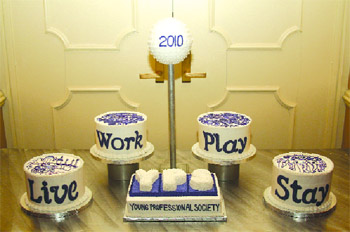
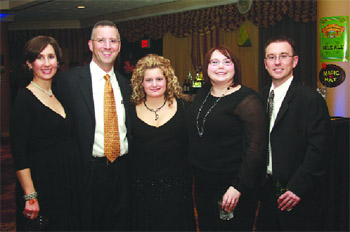
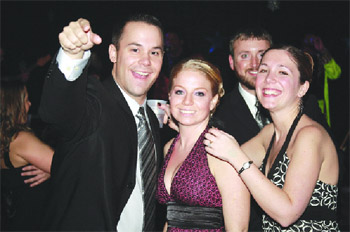
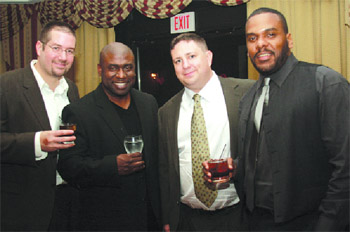












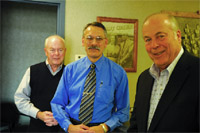

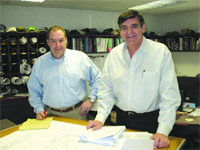

 David Condon is chief operating officer at Northeast Security Solutions Inc; (413) 733-7306;
David Condon is chief operating officer at Northeast Security Solutions Inc; (413) 733-7306; 
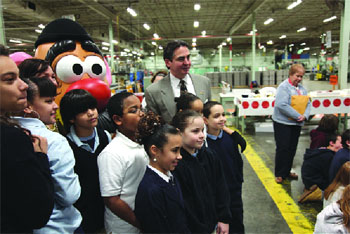



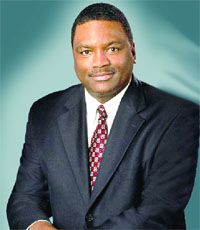

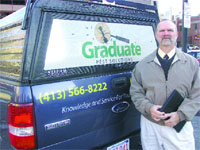
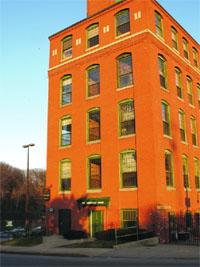

 Kimberly A. Klimczuk, Esq. is a partner in the law firm Royal & Klimczuk, LLC. She specializes in management-side labor and employment law; (413) 586-2288;
Kimberly A. Klimczuk, Esq. is a partner in the law firm Royal & Klimczuk, LLC. She specializes in management-side labor and employment law; (413) 586-2288; 
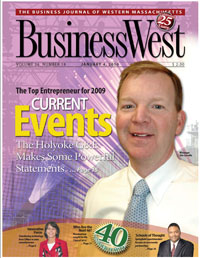 It was a spirit of entrepreneurship that made Holyoke into one of New Englands most vibrant industrial centers more than a century ago. Today, that spirit lives on in a place where one might not expect to find it at the citys 107-year-old municipal utility. The Holyoke Gas & Electric Department has initiated a number of bold steps in recent years, from purchase of the Holyoke Water Power Co., to startup and rapid expansion of its fiber-optic network, to ongoing work to build its portfolio of renewable energy. The sum of these and other ambitious steps has made the municipal utility a primary driver of economic development in the city and BusinessWests Top Entrepreneur for 2009.
It was a spirit of entrepreneurship that made Holyoke into one of New Englands most vibrant industrial centers more than a century ago. Today, that spirit lives on in a place where one might not expect to find it at the citys 107-year-old municipal utility. The Holyoke Gas & Electric Department has initiated a number of bold steps in recent years, from purchase of the Holyoke Water Power Co., to startup and rapid expansion of its fiber-optic network, to ongoing work to build its portfolio of renewable energy. The sum of these and other ambitious steps has made the municipal utility a primary driver of economic development in the city and BusinessWests Top Entrepreneur for 2009.
